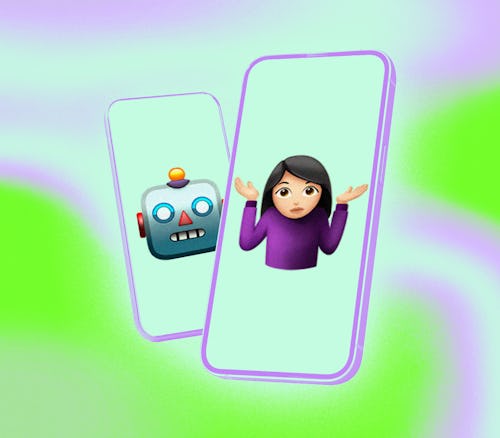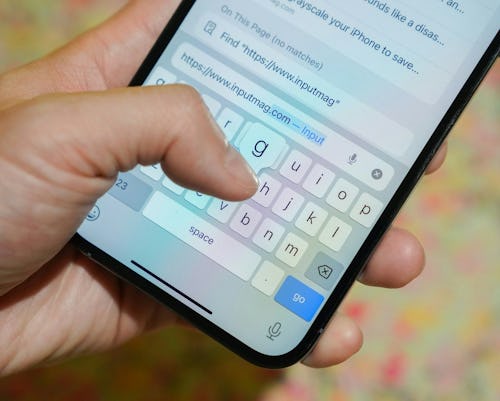
After a few teases and years of reserved implementations of machine learning, Apple is expected to make WWDC 2024 all about AI. But based on reports published ahead of the event, what the company has in store won’t be as revolutionary an approach as many are hoping for.
When Siri launched on the iPhone 4S in 2011, Apple was ahead of the game. Voice-driven AI assistants had been demoed (Siri was technically an acquisition), but Apple was the first tech company to ship one in a mass-consumer product. In the Google Assistant and Amazon Alexa-filled years that followed, Apple’s updates have been more modest. Machine learning and natural language processing are all over iOS, and Siri runs on-device, but flashy displays of AI haven’t materialized. With natural-sounding, increasingly capable-seeming chatbots like ChatGPT now an option everyone is aware of and can access, Apple has fallen behind.
There’s an expectation that by arriving late — after multiple GPT releases, Microsoft’s Copilot, and Google’s Gemini — Apple will bring the most polished and coherent approach to generative AI of any of its competitors. Realistically, what the company has planned sounds like it will be more of the same, largely because Apple has to be cautious and it’s not clear AI is as useful as it’s advertised to be.
A Whole Lot of Text Summaries

A majority of software features built around generative AI are defined by a large language model’s capacity to digest, process, and generate text. That doesn’t seem like it will change with Apple’s take. Based on a report from Bloomberg, Apple plans on introducing AI-generated summaries throughout its operating systems, condensing text messages, emails, notifications, voice memos, and maybe even shared files — to theoretically — save you time. Text generation is also expected to come to Apple’s productivity apps, letting you create new text based on a simple prompt.
Much like Google’s Magic Editor, the Photos app is expected to get new editing abilities, like removing backgrounds and generating new content when a photo is resized. Apple is also reportedly hoping to let users generate their own emojis, too.
In terms of Apple’s original AI offering, Siri will reportedly get smarter, though it’s not clear how exactly the company will go about it. According to Bloomberg, Apple has made some kind of deal with OpenAI to incorporate the company’s models into its platforms. Whether that’s as simple as slotting in GPT-4o for Siri and calling it a day, or a more elaborate system that handles some responses on-device and others in a privacy-branded cloud Apple operates, it would go further than what Siri currently offers.
The most interesting concept the company is exploring is also the one it’s reportedly not shipping until sometime next year. Apple plans to let Siri interface and operate what seems like every app running on your device. You could ask Siri to email a voice memo, or move a note between folders, and it could do it, no questions asked. Apple has published research on teaching AI to understand app screens, which could ultimately support this Siri expansion.
We’ve Seen These Features Before

If you’ve been paying attention to AI announcements from the last year or two, all of Apple’s plans sound familiar. In May, Google I/O was filled with a similar sprinkling of text summarization and generation across Google Workspace and Android. Outside of direct interaction with Gemini, and some unique image-based skills, everything the company is pushing can be broken down into summarizing long emails, messages, or files, and generating lackluster text and images in every field where it’s allowed.
The only real standouts are the ways Google is exploring the multimodal capabilities of Gemini, combining an understanding of images with natural language responses, or even something akin to the company’s famous Google Glass except this time with an AI that can better identify the environment around it. As far as we know, Apple has no plans for anything even approaching that, nor does it necessarily even make sense for the platforms it currently operates.
Working with OpenAI could come with its pluses, of course. The real-time responses and recognition GPT-4o was demoed as having could allow for more personal Siri interactions, or at least a more contextual understanding of the things you’re doing on your laptop or phone. But just like Google’s multimodal demos, it’s not clear if Apple will use any GPTs in that way in this year’s versions of iOS, iPadOS, and macOS.
Too Big to Fail

Apple is in a tricky position. Unlike the Vision Pro, which spent nearly a decade in development in one way or another before being released in 2024, the internal push to ship AI features is reportedly recent. The Wall Street Journal writes that the focus kicked into high gear when Senior Vice President of Software Engineering Craig Federighi tried Microsoft’s GitHub Copilot for the first time in 2022 and was impressed. Two years doesn’t leave a lot of time for the polish Apple typically demands and customers expect.
The company is also burdened in many ways by its own success. There are over 2 billion Apple devices out there, and Apple still supports most of them. Pushing out an AI feature that makes mistakes or shares incorrect information isn’t something Apple should reasonably feel comfortable doing because of the number of people it could affect. You thought the initial rollout of Apple Maps was bad? Now, imagine that, but on like 10 times more devices. Of course, access to those billions of devices is what makes OpenAI willing to be a partner in the first place, so the wheel goes round and round.
For all these reasons, AI on the iPhone, iPad, or Mac can never be too adventurous. It has to only do the things Apple knows can be accomplished with a minimal amount of error. But that also leaves more inventive or all-encompassing ideas for some future that might never come. Speaking from experience, for as flexible as the current AI models are, they’re also limited in ways that require you to work around them, rather than the other way around. Apple will likely take a conservative approach, not just because it has to, but because there’s only so much current AI can actually do. That’s disappointing, but it’s a reality we’re all better off accepting.
FTTT
0 Comments